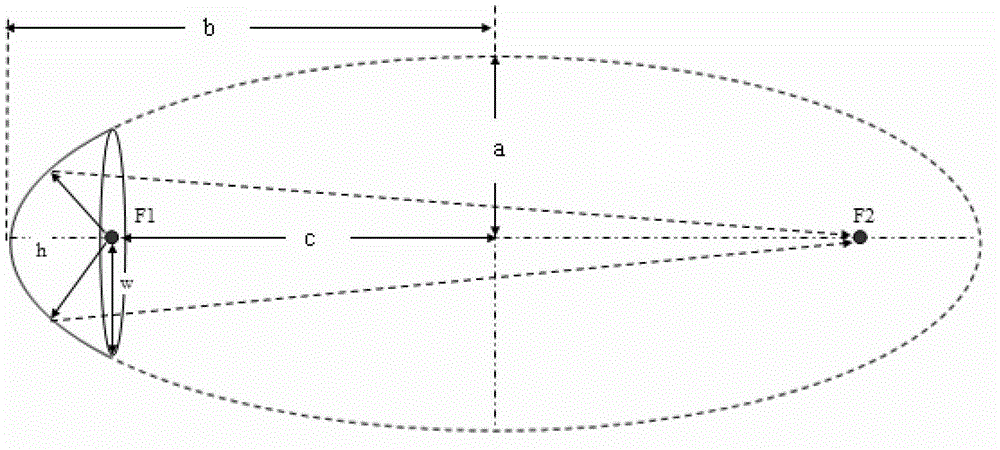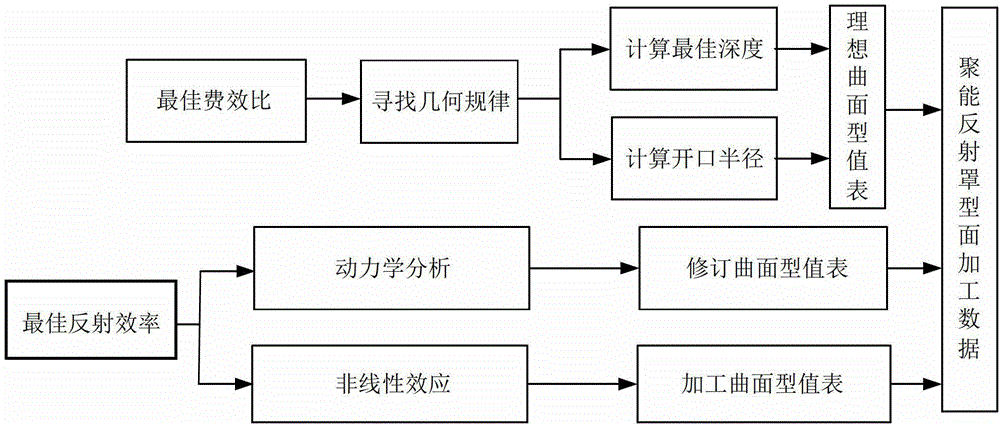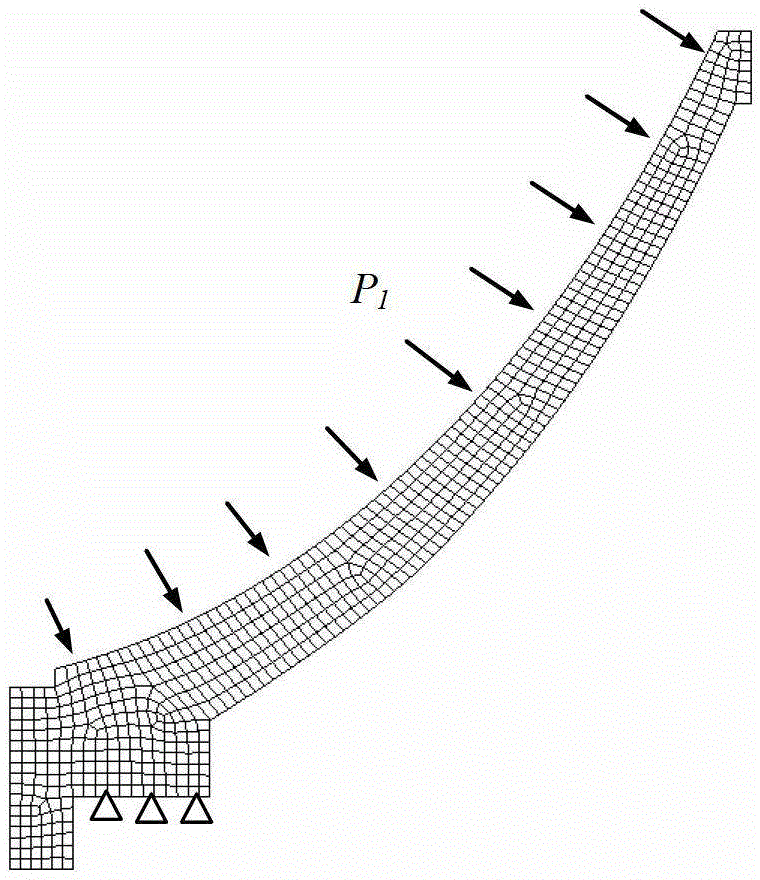A design method of high-power concentrating reflector
A technology for energy-gathering reflectors and design methods, applied in computing, special data processing applications, instruments, etc. Considering the cost-benefit ratio of energy-gathering reflectors and other issues, it can improve the structural stress safety margin and energy-gathering effect, improve design efficiency, and achieve good mechanical properties
- Summary
- Abstract
- Description
- Claims
- Application Information
AI Technical Summary
Problems solved by technology
Method used
Image
Examples
Embodiment 1
[0042] The structure of the ellipsoid energy-gathering reflector to be designed in this embodiment is as follows: figure 1 As shown, its surface equation can be expressed as: . In the figure, c is the half focal length of the reflector, c is 0.15~15m, w is the aperture of the reflector, w is 0.1~1m, h is the depth of the reflector, by installing the discharge electrode at the first focal point F1, it can Converge the energy reflection to the second focal point F2. The position of the second focal point F2 is set according to application requirements.
[0043] The acquisition of the processing data of the energy-concentrating reflector mainly includes three processes, and its flow chart is as follows: figure 2 shown.
[0044] Step 1: Generate ideal surface type value table
[0045] According to the requirements of the best cost-effective ratio, the gain function method is used to calculate the relationship between the energy-gathering gain and the depth h of the reflecto...
Embodiment 2
[0061] The structure of the energy-gathering reflector in this embodiment is as follows: Figure 7 As shown, its surface equation can be expressed as: . By placing the discharge electrode at the focus F of the parabola, the beamforming can be reflected to generate parallel waves. For example, for a parabolic reflector with a diameter of w'=1m and a concave depth of h'=0.5m, placing the discharge electrode at F=0.25m can form an acoustic pulse impact beam with a diameter of 1m. Also adopt the design method adopted in embodiment 1 to obtain the ideal surface type value table, the revised surface type value table and the processed surface type value table, finally according to Figure 6 The specific implementation process is processed to obtain the parabolic energy-concentrating reflector with the best cost-effectiveness ratio and the best reflection efficiency characteristics.
PUM
 Login to View More
Login to View More Abstract
Description
Claims
Application Information
 Login to View More
Login to View More - R&D
- Intellectual Property
- Life Sciences
- Materials
- Tech Scout
- Unparalleled Data Quality
- Higher Quality Content
- 60% Fewer Hallucinations
Browse by: Latest US Patents, China's latest patents, Technical Efficacy Thesaurus, Application Domain, Technology Topic, Popular Technical Reports.
© 2025 PatSnap. All rights reserved.Legal|Privacy policy|Modern Slavery Act Transparency Statement|Sitemap|About US| Contact US: help@patsnap.com



